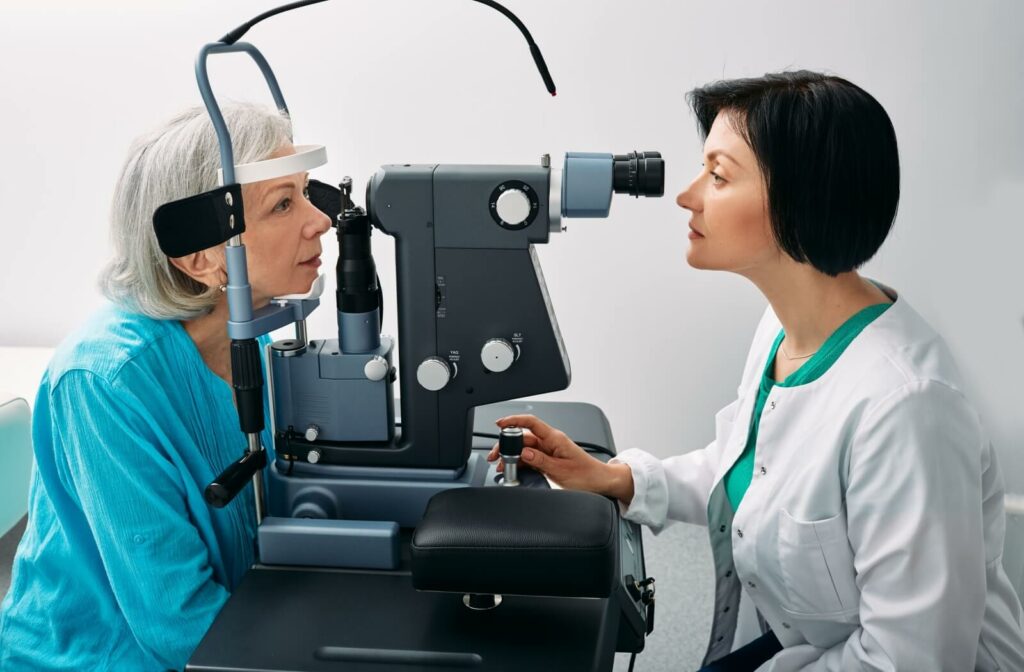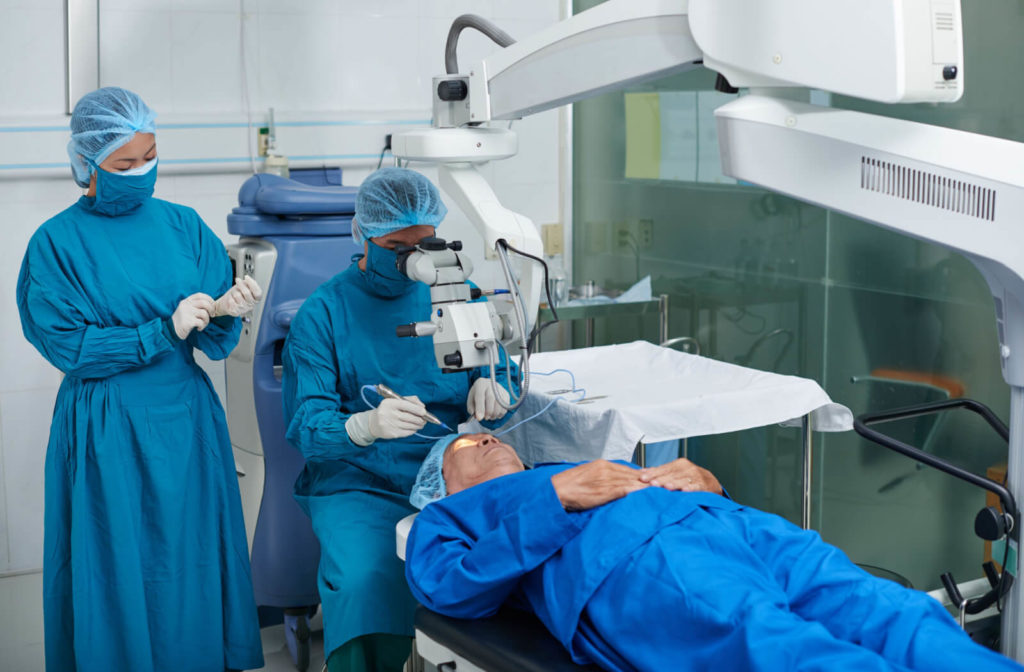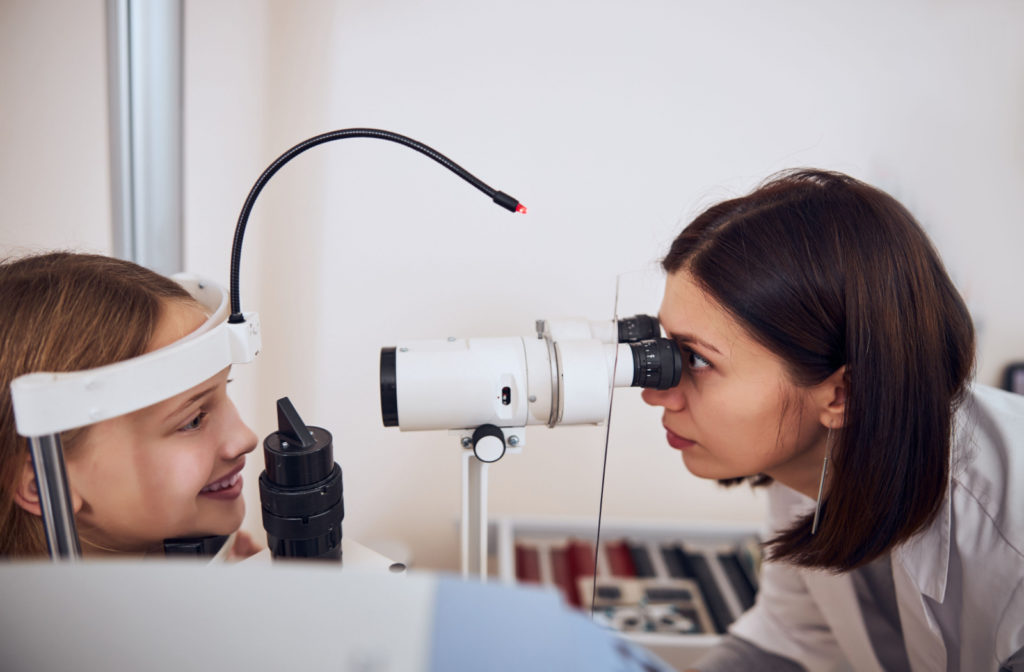Exploring the most up to date Technical Advancements in Optometry and What They Mean for Optometrists
In the ever-evolving area of optometry, recent technical improvements are reshaping just how experts come close to eye treatment. From the accuracy of Optical Coherence Tomography to the nuanced understandings used by AI-driven diagnostic devices, these advancements are establishing brand-new standards in individual assessment and therapy. Teleoptometry is poised to redefine accessibility, making certain that proficiency goes beyond geographical restrictions. As these improvements penetrate the practice, optometrists are confronted with the challenge of welcoming these tools to improve individual outcomes. Yet, the inquiry remains: exactly how will these technological changes redefine the duties and obligations within the career?
Developments in Diagnostic Equipment
Progressing the field of optometry, developments in analysis devices have transformed the method eye treatment specialists assess and detect aesthetic impairments and ocular conditions. The past decade has observed substantial technical developments, allowing even more thorough and accurate examinations. Optical Comprehensibility Tomography (OCT), for instance, supplies high-resolution cross-sectional pictures of the retina, enabling for the early discovery of diseases such as glaucoma and age-related macular degeneration. This non-invasive imaging strategy has actually come to be vital in modern optometric technique.
One more trick advancement is the intro of sophisticated corneal topography systems, which map the surface area curvature of the cornea with precision. These tools are specifically valuable for fitting get in touch with lenses and detecting corneal conditions. Additionally, electronic retinal imaging has actually transformed standard ophthalmoscopy, providing in-depth, breathtaking views of the retina that facilitate detailed visual exams.
The advancement of wavefront aberrometry has actually likewise been essential, making it possible for the evaluation of refractive mistakes with unmatched precision (Eye Doctor). This innovation helps in tailoring restorative lenses and improving medical results for refractive surgeries. Collectively, these diagnostic improvements equip optometrists to deliver superior patient treatment, guaranteeing very early intervention and customized therapy techniques, inevitably boosting visual health and wellness outcomes
AI in Individual Monitoring
Building on the structure of cutting-edge analysis devices, the unification of artificial knowledge (AI) in patient management stands for a transformative jump for optometry. AI systems are increasingly employed to boost performance, accuracy, and customization in patient care. By evaluating vast amounts of information, AI can recognize patterns and anticipate prospective ocular problems, allowing eye doctors to tailor treatments better. This ability is critical in handling chronic eye conditions such as glaucoma and diabetic person retinopathy, where very early discovery and continuous surveillance are crucial.
Furthermore, AI-driven systems assist in structured patient interactions and management procedures. Automated scheduling, online consultations, and individualized follow-up strategies not only improve patient satisfaction however also maximize time monitoring for practitioners. These systems can triage individuals based on the necessity of their problems, guaranteeing that those in crucial need obtain punctual attention.
In addition, AI improves decision-making by supplying eye doctors with evidence-based referrals and treatment paths. By incorporating information from electronic wellness records, AI devices supply insights that educate medical decisions, decreasing the risk of mistakes and boosting person end results. As AI remains to develop, its role in individual monitoring will likely expand, reshaping the landscape of optometric treatment.
Advancements in Retinal Imaging
In the world of optometry, retinal imaging has observed remarkable technological advancements that are enhancing analysis capabilities and individual treatment. Developments such as Optical Coherence Tomography (OCT) and fundus photography have changed just how eye doctors analyze the retina and envision. OCT, particularly, supplies high-resolution, cross-sectional photos of the retina, permitting the detailed assessment of its layers. This ability is invaluable for very early discovery and monitoring of problems like glaucoma, diabetic retinopathy, and age-related macular deterioration.
Boosted imaging techniques like OCT angiography are more refining analysis precision. This non-invasive strategy maps blood flow in the retina, offering essential insights right into vascular health and wellness without the requirement for dye injections. Furthermore, adaptive optics modern technology is being integrated right into retinal imaging systems to fix ocular aberrations, supplying unprecedented image clarity. Such continue reading this innovations help with the recognition of minute retinal changes that might signify illness progression.
Additionally, innovations in man-made knowledge are enhancing retinal imaging by making it possible for computerized analysis of large datasets. These systems help eye doctors in recognizing patterns indicative of pathology, therefore enhancing analysis precision and efficiency. Jointly, these innovations are changing retinal imaging right into a keystone of contemporary eye treatment, boosting end results and increasing therapeutic opportunities.
Teleoptometry's Growing Function
Teleoptometry is increasingly becoming an important component of eye treatment, driven by innovations in data and diagnostic tools. As optometry welcomes digital transformation, teleoptometry promotes remote appointments, permitting eye doctors to expand their solutions past standard limits. This is specifically useful in rural and underserved locations where access to specialized eye treatment is frequently limited. By leveraging high-resolution video conferencing and advanced retinal imaging, eye doctors can carry out thorough eye exams from afar, ensuring prompt medical diagnosis and treatment.
The assimilation of Discover More Here fabricated knowledge (AI) more boosts teleoptometry, enabling the evaluation of visual information and aiding in the discovery of eye conditions such as glaucoma and diabetic retinopathy. AI-powered formulas can quickly interpret complicated imaging data, supplying eye doctors with useful understandings that strengthen professional decision-making.
Moreover, teleoptometry supports connection of care with smooth integration with digital wellness documents (EHRs), permitting eye doctors to keep detailed patient backgrounds. This makes certain that patients get consistent and personalized care even when seeking advice from various specialists.
Regardless of these benefits, challenges stay, consisting of making sure data protection and managing client expectations. Nevertheless, teleoptometry stands for a significant stride towards more easily accessible, effective, and patient-centered eye care. As modern technology develops, its function is poised to expand additionally.

Future Trends in Eye Treatment
A myriad of cutting-edge trends is readied to reshape the future of eye treatment, driven by technical developments and the evolving needs of people. One significant trend is the combination of man-made intelligence (AI) in diagnostics, which assures to improve the precision and efficiency of eye exams. AI formulas can evaluate huge amounts of information from retinal pictures, potentially spotting problems like diabetic person retinopathy and glaucoma earlier than standard techniques.
Furthermore, individualized medicine is obtaining grip in optometry, with genetic testing informing tailored treatment strategies. This technique intends to enhance patient results by tailoring interventions to specific genetic profiles. Wearable technology, such as clever call lenses, is likewise on the horizon, using real-time surveillance of intraocular pressure or sugar levels, therefore giving continuous insights into systemic and ocular health and wellness.
The adoption of enhanced fact (AR) and online fact (VR) in training and client education is one more emerging pattern. These technologies offer immersive experiences that can boost understanding and abilities both for clients and optometrists. As these trends develop, eye doctors need to remain abreast of technical improvements to provide cutting-edge care, making certain enhanced individual results and complete satisfaction in the vibrant landscape of eye care.
Verdict

Collectively, these analysis improvements equip eye doctors to provide remarkable individual treatment, ensuring very early intervention and customized therapy techniques, eventually improving visual wellness outcomes.

As these technologies proceed to evolve, optometrists must adapt and incorporate them into method, ultimately maximizing workflow efficiency and elevating the standard of eye care provided to individuals.